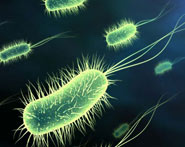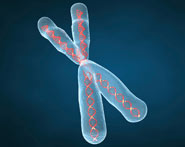


 النبات
النبات
 الحيوان
الحيوان
 الأحياء المجهرية
الأحياء المجهرية
 علم الأمراض
علم الأمراض
 التقانة الإحيائية
التقانة الإحيائية
 التقنية الحيوية المكروبية
التقنية الحيوية المكروبية
 التقنية الحياتية النانوية
التقنية الحياتية النانوية
 علم الأجنة
علم الأجنة
 الأحياء الجزيئي
الأحياء الجزيئي
 علم وظائف الأعضاء
علم وظائف الأعضاء
 الغدد
الغدد
 المضادات الحيوية
المضادات الحيوية|
Read More
Date: 2025-05-05
Date: 2025-03-27
Date: 29-2-2016
|
Already in the ancient world it was common knowledge that an individual rarely was infested twice with the same disease. This observation led to the practice of inoculation that has been documented in China more than 1000 years before Jenner’s remark able studies [ 1 ]. Even the term “immunity” was used in reference to plague during the fourteenth century. Progress in natural sciences and the development of experimental techniques during the eighteenth century led to the systematic use of inoculation to fight smallpox, one of the most serious threats during that time. In the early eighteenth century variolation, the transmission of small, presumably sublethal volumes of liquid from smallpox pustules was introduced to England by Lady Mary Wortley Montagu. Lady Montagu survived infection with smallpox herself. Impressed with the method of variolation she ordered the embassy surgeon, Charles Maitland, to inoculate her 5-year-old son. After her later return to London in 1721, Lady Montagu introduced the method to the physicians of the royal court. Thereafter variolation became quickly popular among physicians in Europe. However, variolation was not without risks. In average 2–3 % of variolated persons died from the disease but the mortality associated with variolation was ten times lower than that associated with naturally occurring smallpox.
Modern concepts of vaccination date back to 1796 when Edward Jenner based on empirical observation used liquid from pustules of cowpox to induce protective immunity in human individuals. Today the use of cowpox as a vaccine is considered to be the landmark of modern vaccination concepts. Edward Jenner recognized that milkmaids infected by cowpox, a generally harmless infection for humans, were rendered immune to smallpox. In 1796 Jenner deliberately inoculated people with small doses of cowpox (vaccinia) from pustules and successfully demonstrated that protection against smallpox could be achieved. Jenner termed this preventive measure “vaccination” and over the following decades inoculation against smallpox using cowpox became widely accepted in Europe. While Jenner at his time neither understood nor could explain the biological basis of “vaccination,” his concept was successful and provided protection from smallpox apparently due to cross-immunity between cowpox and smallpox.
Until the end of the nineteenth century, diseases were believed to be caused by invisible microbes which were “spontaneously generated” in response to “bad air” and other environ mental triggers, as well as a belief that imbalance in the body caused what were actually infectious illnesses. Progress in micro biology and virology since the late nineteenth century elucidated the modern concept of communicable diseases. Pasteur and Koch established that microorganisms were the true cause of infectious diseases. These discoveries led to the science of immunology . Hence further advances in vaccinology were gained from an increasing understanding of the etiology of infectious diseases and host- pathogen interactions. Pasteur challenged the spontaneous generation theory of microbes while Koch demonstrated that infectious agents transmit diseases. Koch defined four postulates which established an individual agent as the cause of a dis ease. In addition, in the late 1870s Pasteur developed the first attenuation procedure for pathogens. Pasteur’s approach provided microorganisms less pathogenic but still immunogenic. Using animals as a live propagating medium, Pasteur and his team were able to produce attenuated rabies viruses of different strengths of which the weakest could be used to prepare a vaccine . In 1885, the first human individual was vaccinated with a live, attenuated rabies vaccine. However, due to technical limitations of vaccine production at that time, fatal cases of rabies in vaccinated individuals occurred.
At the end of the nineteenth century, many of the fundamental aspects of vaccinology were established due to the pioneering work of Pasteur and Koch. Probably the most important advance was the insight that the administration of pathogens, either attenuated or killed, resulted in protection against the disease caused by the respective non-treated pathogen . The first inactivated vaccines, developed in the 1890s, were directed against the typhoid and cholera bacilli [ 2 ]. Other vaccines consisting of killed whole pathogens, produced in the early twentieth century, were directed against pertussis [ 3 ], influenza [ 4 ], and typhus. These were followed by inactivated vac cines directed against polio (IPV) [ 6 ], rabies , Japanese encephalitis, tick-borne encephalitis [ 6 ], and hepatitis A [ 7 ].
Although inactivated vaccines exhibit a lower risk of vaccine - associated disease than live vaccine s, their efficacy can be reduced by the same factors, i.e., circulating antibodies (maternal antibodies) or concomitant infection. Moreover, multiple doses of inactivated vaccines are generally needed to provide sufficient stimulation of the immune system to induce durable immune response s. This observation led to the introduction of aluminum compounds as vaccine adjuvants (from the Latin worda diuvare, meaning “to help or aid”). Still today aluminum salts represent the most frequently used adjuvant system ( see below). Further progress in bio chemistry facilitated the development of inactivated vaccines based on purified toxins. The first subcellular vaccines made available in the 1920s used diphtheria and tetanus toxoids [ 1 ]. As technology improved, it became possible to purify protein or polysaccharide subunits from infectious organisms to develop increasingly specific vaccines.
Another important milestone was the development of sophisticated ways to culture and propagate infectious pathogens, like viruses, ex vivo. Based on these new techniques the development and production of purified attenuated viral pathogens as live vac cine s became possible. Typical examples of vaccines that use pas sage in artificial media or cell culture as means of attenuation include the oral polio virus (OPV) [ 8 ] or measles , mumps , rubella , and varicella vaccines [ 9 ] as well as the Bacille Calmette-Guérin (BCG) tuberculosis vaccine [ 10 ].
Recent years have been characterized by impressive progress in the fi elds of immunology and molecular biology as well as important technical improvements concerning fermentation and purification. Building on the improved knowledge of the principles of host- pathogen interactions, the host’s immune response today can be dissected in order to identify the individual antigenic structures that are most relevant to initiate protective immunity. The appropriate antigens are isolated as subcomponents of pathogens and subsequently produced in large quantities either by purification or by in vitro construction using molecular genetic technologies. Moreover, innovative adjuvants have been introduced that specifically modify and augment those aspects of the immune response that are most appropriate for protection. These adjuvants also have the potential to generate long-lasting immunological memory to maintain protection.
During the last 100 years vaccine development has evolved from an empirical approach to one of more rational vaccine design where careful selection of antigens and adjuvants is key to the desired efficacy for challenging pathogens and/or challenging populations. Modern vaccine design needs to consider factors beyond target antigen selection to improve immunogenicity while conserving a favorable reactogenicity and safety profile [ 11 ]. With new vaccine technologies currently emerging, it will be possible to custom-design many vaccines for optimal efficacy, low reactogenicity, and excellent safety profiles in the near future.
References
-------------
[1]. Plotkin SL, Plotkin SA (2012) A short history of vaccination. In: Plotkin SA, Orenstein WA, Offi t PA (eds) Vaccines, 6th edn. Saunders, Philadelphia, pp 1–16
[2]. Girard MP, Steele D, Chaignat CL et al (2006) A review of vaccine research and development: human enteric infections. Vaccine 24:2732–2750
[3]. Edwards KM, Decker MD (2008) Pertussis vaccines. In: Plotkin SA, Orenstein WA, Offi t PA (eds) Vaccines, 5th edn. Elsevier, New York, pp 467–518
[4]. Bridges CB, Katz JM, Levandowski RA et al (2008) Inactivated influenza vaccines. In: Plotkin SA, Orenstein WA, Offi t PA (eds) Vaccines, 5th edn. Elsevier, New York, pp 259–290
[5]. World Health Organization (2003) Introduction of inactivated poliovirus vaccine into oral polio virus vaccine-using countries. Wkly Epidemiol Rec 78:241–250
[6]. Demicheli V, Debalini MG, Rivetti A (2009) Vaccines for preventing tick-borne encephali tis. Cochrane Database Syst Rev (1):CD000977
[7]. Fiore AE, Feinstone FM, Bell BP (2008) Hepatitis A vaccines. In: Plotkin SA, Orenstein WA, Offi t PA (eds) Vaccines, 5th edn. Elsevier, New York, pp 177–204
[8]. Sutter RW, Kew OM, Cochi SL (2008) Poliovirus vaccine—live. In: Plotkin SA, Orenstein WA, Offi t PA (eds) Vaccines, 5th edn. Elsevier, New York, pp 631–686
[9]. Vesikari T, Sadzot-Delvaux C, Rentier B et al (2007) Increasing coverage and efficiency of measles, mumps, and rubella vaccine and introducing universal varicella vaccination in Europe: a role for the combined vaccine. Pediatr Infect Dis J 26:632–638
[10]. Orme IM (2015) Tuberculosis vaccine types and timings. Clin Vaccine Immunol 22:249–257
[11]. Zepp F (2010) Principles of vaccine design— lessons from nature. Vaccine 28 Suppl 3:C14–C24



|
|
|
|
لشعر لامع وكثيف وصحي.. وصفة تكشف "سرا آسيويا" قديما
|
|
|
|
|
|
|
كيفية الحفاظ على فرامل السيارة لضمان الأمان المثالي
|
|
|
|
|
|
|
شعبة مدارس الكفيل: مخيَّم بنات العقيدة يعزِّز القيم الدينية وينمِّي مهارات اتخاذ القرار لدى المتطوِّعات
|
|
|